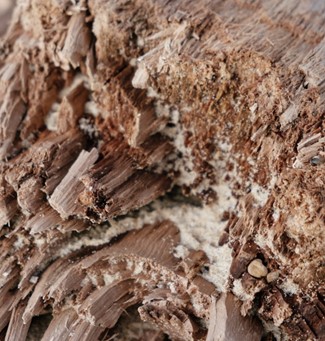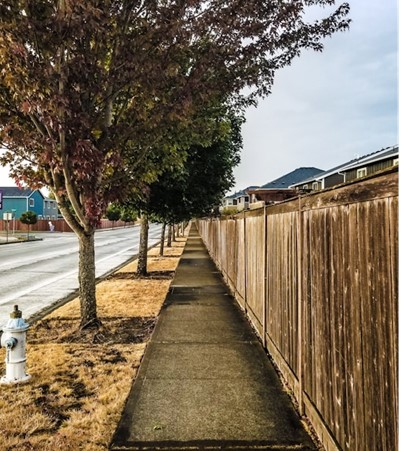
A well-maintained fence not only enhances the curb appeal of your property but also provides security and privacy. However, one of the biggest threats to wood fences is rot and termite damage. If left unchecked, these issues can lead to structural weakening and costly repairs. Fortunately, with proper installation and preventive measures, you can significantly extend the lifespan of your fence. In this article, we explore the causes of rot and termite damage and provide actionable steps to prevent these problems.
Understanding Fence Rot
Fence rot occurs when wood is exposed to moisture for prolonged periods, leading to the breakdown of its fibers. There are two main types of rot:
Dry Rot – Caused by fungi that consume the wood’s nutrients, making it brittle and weak. It typically occurs in areas with limited airflow and excessive moisture.
Wet Rot – Occurs when wood remains damp for extended periods. Unlike dry rot, wet rot tends to spread less aggressively but can still compromise the structural integrity of the fence.
How to Prevent Rot Damage
Choose Rot-Resistant Wood
Certain types of wood naturally resist rot better than others. Consider using:
- Cedar
- Redwood
- Pressure-treated pine
- Composite wood materials
These woods contain natural oils or preservatives that make them more resistant to moisture and decay.
Apply a Protective Sealant or Stain
Regularly applying a water-resistant sealant or stain helps create a protective barrier against moisture. To ensure the best results, use a high-quality, weatherproof stain or sealant specifically designed for outdoor wood. Reapply every 2-3 years or as recommended by the manufacturer to maintain effectiveness. When applying, make sure to achieve even coverage on all surfaces, including edges and ends, to provide comprehensive protection against the elements.
Improve Drainage Around the Fence
Excessive moisture near the base of your fence can accelerate rot, making proper drainage essential for longevity. To prevent water buildup, ensure the ground is graded so that water flows away from the fence. Avoid planting vegetation too close, as it can trap moisture and contribute to decay. Additionally, using gravel or concrete at the base of posts helps reduce soil moisture absorption, providing extra protection against rot and extending the life of your fence.
Maintain Adequate Airflow
Good airflow helps wood privacy fences dry faster, reducing the risk of rotting. To enhance ventilation, it’s essential for installers to leave a small gap between fence boards to promote air circulation. Keep bushes and shrubs trimmed away from the fence to prevent moisture buildup, and regularly clear debris, leaves, and dirt from the base to maintain proper airflow. These simple steps can significantly extend the life of your fence by preventing excess moisture retention.
Inspect and Repair Regularly
Routine maintenance can catch early signs of rot before they spread. Inspect your fence every few months and look for discoloration or soft spots as well as any splitting or warping in the wood.
Fungal growth or mold
If you spot rot, remove the affected area and replace it with treated wood. Apply a sealant to prevent further damage.
Understanding Termite Damage
Termites are wood-destroying insects that can cause severe damage if not detected early. They tunnel through wood, weakening its structure and making it susceptible to breakage. The most common types of termites that attack fences include:
Subterranean termites – Build colonies underground and enter wood through soil contact.
Drywood termites – Live inside the wood and do not require soil contact.
How to Prevent Termite Damage

Use Termite-Resistant Wood
Just like with rot prevention, using termite-resistant wood can significantly reduce the risk of infestation. Consider pressure-treated wood that is infused with termite deterrents, or naturally resistant woods such as cedar and redwood. Another option is composite fencing, which termites cannot digest, providing an additional layer of protection against these pests. By selecting the right materials, you can help ensure the longevity and durability of your fence.
Apply a Termite Treatment
You can apply chemical or natural treatments to deter termites:
Boric acid – A natural insecticide that repels termites.
Termite-resistant coatings – Commercial solutions designed to prevent infestations.
Orange oil or neem oil – Natural deterrents that can be applied to wooden surfaces.
Keep the Fence Dry and Elevated
Since termites thrive in damp conditions, reducing moisture exposure is crucial for preventing infestations. One way to achieve this is by having fence posts elevated slightly above the ground using concrete bases. Additionally, avoiding direct contact between soil and wood by utilizing metal brackets or concrete footings can be helpful. It’s also important to fix any leaks from sprinklers or hoses near the fence, as standing water can create an ideal environment for termites. By addressing these moisture-related issues, you can significantly reduce the likelihood of termite damage to your fence.
Remove Nearby Wood Debris
Wood debris can attract termites and provide them with a nearby food source. Prevent this by:
- Clearing away fallen branches, wood piles, and dead plants.
- Storing firewood at least 20 feet away from the fence.
- Regularly checking wooden structures near your fence for termite activity.
Schedule Regular Inspections
Early detection is crucial in preventing termite infestations, and hiring a professional can help ensure timely intervention. Consider scheduling annual termite inspections to catch any issues before they escalate. Additionally, preventive treatments such as bait systems or soil termiticides can be applied to deter termites from invading your property. If termite activity is detected, immediate treatment is essential to minimize damage and stop the infestation from spreading. By taking these proactive steps, you can safeguard your property against costly termite damage.
Final Thoughts
Preventing fence rot and termite damage requires a combination of smart material choices, regular maintenance, and proactive treatments. By investing in quality wood products, applying protective coatings, improving drainage, and staying vigilant with inspections, you can significantly extend the lifespan of your fence. Taking these preventive steps now will save you time, money, and hassle in the long run, ensuring that your fence remains strong and attractive for years to come.
